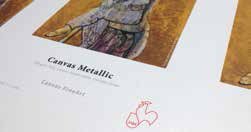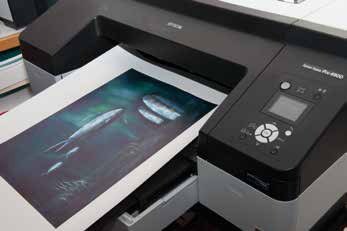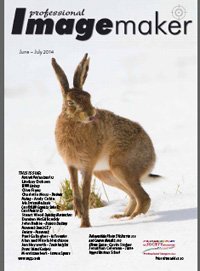articles/Paper/pc-hahn-slk-page2
Hahnemuhle Photo Silk Baryta 310 and Canvas Metallic 350 - part 2 of 1 2 3
by Mike McNamee Published 01/06/2014

Monochrome Performance
We used Epson ABW settings at 'Neutral' and 'Dark' to deliver a print which was 1.45% too light at the 50% grey swatch. Use of 'Darker' would boost this to 2.5% too dark and so you may take your choice! The Dmax was a massive 2.6 and the metamerism rose slightly over the 'all colour' value to 1.77. The majority of viewers would deliver a 'flawless' verdict on the print, it is difficult to see how it could be improved.
Real Prints
We made some real prints from the Panasonic GX7 on test for this issue. They looked excellent and so there is nothing to report. The sheen of the paper is made more pronounced by the presence of the ink. The stiffness in the hand gives the prints a sumptuous feel and they would mount into a window matt staying flat. Like all alpha cellulose baryta papers, this one might need a slightly wider platen gap to prevent head striking although our roll feed media ran trouble free.
OVERALL
We are running out of things to say about this class of media they always perform spectacularly well with no flaws to report upon. If you like the slight warmth they impart then you can choose with complete confidence. Prices vary from both type and distributor but you can expect to pay something like £2 per A3 sheet.

OBA or No OBA
There is confusion abroad in both photography magazines and on the forums about the OBA content of the latest issues of Ilford Gold Fibre Silk look alikes. So let's clear it up - they do contain OBAs. The certainty of this statement comes from measuring the Fluorescence values according to TAPPI T452 methodology.
We consistently record values around 2.5-3.0 which is quite low but certainly not zero. In our compiled (but incomplete) database we have 17 baryta papers higher than 3.0 and five less than 1.0. The data is supported by the image shown.
Shot in a UV booth the fluorescence activity is seen identically in both GFS and HPSB 310 and you will note the lack of response under the Lee 226 UV Cut filter.
Also in the picture is our reference white base for Whiteness measurements. With genuine zero OBA, this is optically dead in the booth. One difference which was noticeable between GFS and HPSB 310 was that the GFS was around 1 Lab point less blue, ie more yellow. This was detectable by eye if side-by-side comparisons were made. At first we thought the GFS had yellowed but comparing the year-old results with current readings gave close agreement - in other words the media had not yellowed over time. The difference between the GFS and HPSB was 1.45ΔE₀₀, enough to be detectable by eye but it could be a process variable rather than a deterioration in the coating (assuming that the coating is the same, a big assumption without basis; we have no special intelligence on the matter!).
Please Note:
There is more than one page for this Article.
You are currently on page 2
- Hahnemuhle Photo Silk Baryta 310 and Canvas Metallic 350 page 1
- Hahnemuhle Photo Silk Baryta 310 and Canvas Metallic 350 page 2
- Hahnemuhle Photo Silk Baryta 310 and Canvas Metallic 350 page 3
1st Published 01/06/2014
last update 09/12/2022 14:57:29
More Paper Articles
There are 30 days to get ready for The Society of Photographers Convention and Trade Show at The Novotel London West, Hammersmith ...
which starts on Wednesday 14th January 2026





